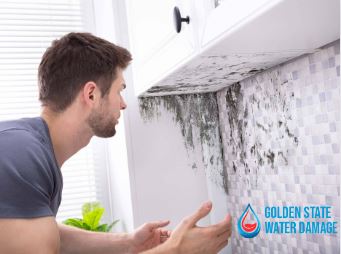Mold growth can be a common issue in La Crescenta and Montrose, California, due to the region’s warm climate and proximity to the ocean. If you’re dealing with mold growth in your home or business in these areas, it’s essential to understand the proper techniques and best practices for effective mold removal. Mold remediation requires thorough knowledge, proper equipment, and adherence to safety guidelines to ensure safe and successful removal of mold from your property.
Identify the Source of Moisture
Mold needs moisture to grow, so the first step in effective mold removal is to identify and address the source of moisture. This could be a leaky pipe, a roof leak, condensation, or poor ventilation. If the underlying moisture issue is not addressed, mold is likely to return even after removal. It’s crucial to fix the source of moisture before proceeding with mold removal to prevent future mold growth.
Assess the Extent of Mold Contamination
Before starting mold removal, it’s important to assess the extent of mold contamination. This may involve a visual inspection, as well as mold testing conducted by a certified mold inspector. The assessment will help determine the type of mold, the level of contamination, and the appropriate remediation strategies.
Hire a Certified Mold Remediation Professional
Mold removal is not a DIY task and should be done by a certified mold remediation professional. Look for a reputable mold removal company in La Crescenta or Montrose that holds certifications from recognized organizations such as the Institute of Inspection, Cleaning and Restoration Certification (IICRC) or the National Association of Mold Remediators and Inspectors (NAMRI). A certified professional will have the necessary knowledge, experience, and equipment to safely and effectively remove mold from your property.
Containment and Removal of Mold
During the mold removal process, proper containment measures should be taken to prevent cross-contamination to other areas of the property. This may involve sealing off the affected area with plastic sheets and using negative air pressure to ensure that mold spores do not spread to other parts of the property. The mold should then be removed using appropriate techniques and equipment, such as HEPA vacuums and air scrubbers, to capture and filter out mold spores.
Proper Disposal of Mold-Contaminated Materials
Mold-contaminated materials, such as drywall, carpet, or insulation, should be properly bagged and disposed of according to local regulations. Improper disposal can lead to further contamination and spread of mold spores. A certified mold removal professional will follow proper protocols for the safe disposal of mold-contaminated materials, in compliance with local regulations.
Cleaning and Sanitization
After mold removal, the affected area should be thoroughly cleaned and sanitized to remove any residual mold spores. Non-porous surfaces can usually be cleaned with appropriate mold cleaning agents, while porous materials may need to be removed and replaced if they cannot be effectively cleaned.
Post-Remediation Verification
Once mold removal is complete, it’s important to conduct post-remediation verification to ensure that all mold has been effectively removed and the affected area is safe for occupancy. This may involve visual inspection, air sampling, and other testing methods to confirm that the mold has been successfully remediated.
Preventative Measures
To prevent future mold growth, it’s important to address any underlying moisture issues and take preventative measures. This may include improving ventilation, fixing leaks promptly, using dehumidifiers in humid areas, and ensuring proper insulation to prevent condensation.
Conclusion
Dealing with mold growth can be stressful, but following the proper mold removal guidelines and working with a certified professional can help ensure that your property is safe and free from mold contamination. Remember to address any moisture issues promptly and take preventive measures to maintain a mold-free environment in your home or business.

